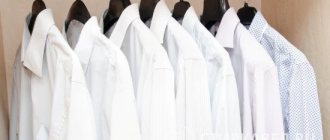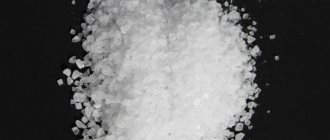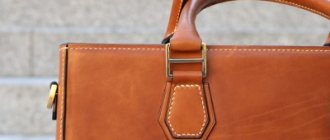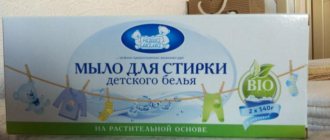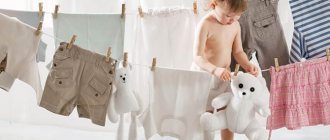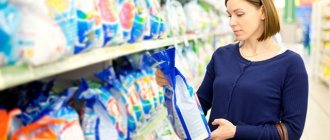For every child who explores the world around us through trial and error, stains on clothes are a normal occurrence. Of course, such daily washing takes a lot of energy from mom. But the difficulty is not only in ensuring the cleanliness of children's things, but also, mainly, in laundry detergents: it is impossible to deal with difficult stains with “adult” products.
How to bleach baby clothes safely and effectively - the best life hacks for moms from the editors of COLADY.
Pixabay Photos
Bleaching children's clothes made from cotton fabrics
- Mix baking soda (1/2 cup) with a glass of hot water until the powder dissolves.
- Pour 3% hydrogen peroxide into the solution (1/2 cup = pharmacy bottle).
- Dissolve the hydroperite tablet there.
- After pouring the solution into a spray bottle, direct the stream directly to the dirtiest stains on your clothes.
- If, after 15 minutes, the contamination still remains, then the laundry can be left in the same solution until the morning.
You can also moisten a cotton pad with hydrogen peroxide and rub the newly stained area of clothing (only white!).
Whitening with special means
You can restore the whiteness of children's clothes using specialized and “folk” means.
It is most convenient to use store-bought bleaches. If we are talking about products from the wardrobe of a baby from 0 to 2 years old, you should buy only bleach for children's things, for example: “Nanny”, “Eared Nanny”, “Baby Speci”, “Cotiko”. For the clothes of older children, any bleaching products that do not contain chlorine, such as Bos Plus, Vanish, Persol, are suitable.
It is not recommended to use bleaches with chlorine to lighten children's clothing. They may cause an allergic reaction.
To get rid of yellowness and gray deposits, oxygen bleach is added to the soaking container along with laundry soap powder or shavings. After this, the item is washed in the usual way.
To lighten children's wardrobe items made from any fabric, ordinary laundry soap and Antipyatin are suitable. A quarter of the block is grated. The resulting shavings are dissolved in a small container of boiling water and added to a basin of warm water. Grayed items are soaked in a washing solution for 2-4 hours.
Very dirty soles of socks and tights are first generously soaped on the underside and left for 1-6 hours. Only after this the products are completely soaked.
For difficult stains
For advanced cases, the following mixtures are used:
- Laundry soap, salt, soda, taken in a ratio of 1:1:1.
- 1 tbsp. l. peroxide and soda. The substances are dissolved in water and the mixture is heated to 70°. Clothing made from durable natural fabric is kept in hot bleach for 10-15 minutes.
- Salt, soda and washing powder (2 tablespoons of each ingredient) are mixed in a metal bowl. The solution is brought to a boil and grayed or yellowed linen, viscose, and cotton products are boiled in it for 15 minutes to half an hour. There are other compositions for boiling.
Table salt is our everything
It can be found in every home. If you don’t have time to run to the store, you can do the following:
- Dissolve 100 grams of salt in hot water.
- Add 3 tbsp. l. peroxide and 1 tbsp. l. ammonia.
To achieve an ideal result, add a little hypoallergenic washing powder to the solution. The method is suitable for cotton fabric and wool.
As you can see, bleaching children's clothes is easy. There are many recipes and remedies. Which one to choose is up to you. The main thing is that washing is a joy for the mother and for the benefit of the baby.
Washing rules
In order to properly wash various children's clothes and not make them look indecent, you need to remember the generally accepted rules. The recommendations are as follows:
- diapers and baby clothes are always washed separately from adult laundry;
- it is necessary to sort children's things by color and texture;
- wash the entire item of clothing, and not just the stained area;
- Before washing, the clothes are cleaned of any dried-on contaminants, for example, food residues;
- You can wash baby clothes only with detergents intended for newborns, the same applies to boiling.
- Things must be rinsed thoroughly and dried outside.
Advice! Before the child is 6 months old, it is advisable to wash his clothes with soap shavings.
Features of washing in a washing machine
Many automatic washing machines have a “Baby Clothes” function or something similar. Its feature is the increased volume of water used for rinsing. Thanks to this, the washing powder is completely washed out.
The temperature for washing children's clothes is selected based on the following requirements:
- diapers, bed linen – 80-90 °C;
- other things - depending on the manufacturer’s recommendations, but not lower than 40 °C.
If there is no special functionality, then the mode is selected in accordance with the type of fabric. This sets up several rinse cycles.
Potassium permanganate - simple and effective
If one small stain appears on your clothes, you can remove it with this recipe:
- Dissolve several crystals of potassium permanganate in a glass of vinegar (200 ml).
- Soak a cotton pad in the solution and wipe the stain until it disappears completely.
If you need to bleach the product completely, do the following:
- Dissolve a little potassium permanganate in 10 liters of hot water until it turns light pink.
- Add 20-30 grams of baby powder.
- Soak clothes in the prepared solution. It should be soaked until completely cooled.
- Rinse the laundry thoroughly.
Removing stains
White children's clothing is often damaged due to stains of various origins. To return it to its original whiteness, local lightening is carried out. What means are suitable for this?
Universal bleaches for children's clothes do an excellent job of removing traces of any food, stains from juice and other drinks, as well as blood, urine, and feces. Follow the instructions. Most often, the brightener is diluted with water 1 to 1 and rubbed into the stain with a cotton pad. After a quarter of an hour, wash off.
Folk remedies are also used to remove stains, for example:
- warmed lemon juice;
- peroxide mixed with liquid soap in a 1:1 ratio;
- heated glycerin;
- aqueous solution of citric acid (1 tsp per 1 liter of hot water);
- liquid soap with ethyl alcohol.
Thus, even heavily soiled white items can be saved. In this case, the brightener must be chosen especially carefully, since the clothes treated with it will subsequently come into contact with the child’s skin.
Returning whiteness to fabrics yellowed from long-term storage
- Ingredients: 100 g of soap shavings, several crystals of potassium permanganate, 6 liters of water.
- Step-by-step instructions: stir soap shavings and potassium permanganate in warm water until completely dissolved. In a container suitable for boiling, combine linen made from white natural fabrics with a bleaching solution. Straighten the laundry without compacting it. Put on fire and wait for it to boil. Reduce heat and simmer, stirring, for about half an hour. Allow the laundry to cool in the solution. Then remove the laundry and rinse thoroughly.
Ready-made store-bought bleaches
A baby's curiosity and interest in the world around him is limitless. And the resulting stains on clothes during his research are considered a common occurrence. Every day my mother washes white clothes, diapers and underwear. But she is not always satisfied with the result. And then you have to look for products that help whiten children's clothes.
If you don’t have the time or desire to tinker with folk recipes, and you urgently need to whiten things at home, we suggest you familiarize yourself with store-bought bleaching products. There are three main types:
- chlorine-containing;
- optical;
- oxygen
Check out the characteristics of each type in the table.
| Chlorine-containing | Optic | Oxygen |
| White underwear | White underwear | White and colored linen |
| Does not protect fabric structure | Doesn't remove stains, just disguises them | Protects fabric structure |
| Dangerous for children's health | Poor rinsing | It not only removes stains, but also disinfects children's clothes. Rinses well in any water |
But after using store-bought products, a serious problem may arise - skin allergies in the baby. In this case, folk recipes will help you deal with stains at home.
Everything you need to know about stain removers
What are stain removers made of?
In this section, we will dwell in detail on the main active ingredients that can be found in stain removers and indicate the important nuances of their use.
Oxygen-containing
As mentioned above, most children's products contain oxygen-containing agents: hydrogen peroxide - in liquid forms, sodium percarbonate and perborate - in powders.
The principle of their operation is simple: oxidation of pollution products occurs, and the resulting substances are easily removed from the surface of the fabric. Stabilizers and activators are added to oxygen stain removers. These components allow the product to be stored longer and work at different temperatures - from room temperature to 90 ° C, as when washing cotton children's clothes.
Oxygen stain removers may contain optical brighteners, so they should be used with caution on colored fabrics.
Enzymatic
Products with enzymes cope well with organic contaminants: food, blood, natural body secretions. The composition contains one or more enzymes:
- protease – breaks down protein contaminants;
- amylase – affects starch and other carbohydrates;
- lipase – copes well with greasy stains;
- cellulase - removes yellowness and grayness from fabric.
Most enzyme stain removers contain multiple enzymes, so you don't have to worry about what to use to remove stains on baby clothes. Their features: optimal operation in water of 40 ° C and the need for prolonged contact with the fabric to completely remove dirt. Such products are well suited for cotton or synthetic clothing, but wool and silk fabrics are prohibited from being treated with them.
Adsorbent
Some stain removers contain adsorbents - substances that bind polluting particles and prevent them from sticking to the fabric again. Some of them help to clean the item even without washing: you need to apply the composition to the stain and brush it with a brush. Adsorbents are suitable for colored and white laundry made from any fabric, but only work on fresh soil.
Solvents
Stain removers for combating old stains often contain glycerin or alcohols. Such chemicals react with fat, resins and paints and help save your favorite thing even in hopeless cases. They are recommended for processing thick colored or dark fabrics.
Surfactant-based stain removers
Surfactants are often a concern for parents, but they are not always something to be afraid of. Surfactants are divided into ionic - they change the surface tension of water and are recognized as unsafe for the environment, and non-ionic - modern non-toxic components. The latter include saponins and sugar alkyl polyglucoside (APG).
Non-ionic components work even in hard water at low temperatures, so they are suitable for quick hand washing of contaminated items. The operating principle of the surfactant is to envelop pieces of dirt and “tear” them off the surface of the fabric. Such substances are suitable for any materials.
Stain removers based on sodium fatty acids
This complex name hides the components of ordinary soap. Sodium fatty acids are a type of surfactant, so they stick to dirt, envelop it, and then clean the fabric from the stain. These are safe and non-toxic formulations for the baby that can be used for washing clothes and bedding.
Please note that stain remover soap must be left on contaminated fabric for a long time, and it is unlikely to help with old stains.
Auxiliary components
Many products contain complexing agents - polyphosphates, which reduce water hardness and increase the activity of stain removers. However, phosphates can cause allergies, especially at concentrations greater than 5%.
To avoid negative consequences, choose products with natural complexing agents (zeolites or polycarboxylates). If you cannot find such a product, take the option with a minimum polyphosphate content.
Another common component is optical additives. They function as bleaches, and are often added to stain removers to create the illusion of cleanliness. The ingredients lighten the stain, but do not remove it completely, and can also ruin bright colored fabrics. If possible, avoid such stain removers or buy them only for washing white items.
Selection of product by type of pollution
It is advisable to always have a universal stain remover on hand. It will help with small fresh stains on children's clothes and save mom from problems with washing.
If you want to choose a product with targeted action, use these tips:
- Oxygen-containing actives work best with coloring pigments (berries, chocolate, juices, traces of ink);
- To remove blood and urine stains, you should choose products with enzymes;
- Regular soap will help remove fresh stains of grease and soil;
- old stains from natural emissions, paint and resin are a feasible task for organic solvents.
How to bleach white things with laundry soap and soda
- What does it cope with? This method is as effective as the previous one. It helps perfectly even with old stains and yellowness.
- What fabrics is it suitable for? For cotton and linen.
Place the laundry in a container with three liters of warm water. Rub each item thoroughly with laundry soap. Add 3 tablespoons of baking soda, stir and leave for several hours.
Place the pan over low heat and simmer for about 1 hour, stirring occasionally. The liquid will become colored as it absorbs contaminants.
Rinse the laundry in warm water. Do this until it comes out clean.
Traditional methods of lightening
You can also bleach white children's clothes at home using “folk” remedies. These include pharmaceutical drugs and products that can be found in any kitchen. They are used individually or made into mixtures to enhance the brightening effect. What medications from your home medicine cabinet will remove yellowness and gray plaque?
- Aspirin. The drug is broken into powder and dissolved in hot water. For 1 liter of liquid you will need from 1 to 4 tablets, depending on the condition of the item. When the solution has cooled to 35°, add powder to it, put on clothes and leave for 2-6 hours.
- Potassium permanganate. Prepare a rich-colored solution in a glass of water, then filter it through cheesecloth to get rid of sediment, if any. The clarifier is poured into a filled basin (the color of the water should turn pale pink), and the products are kept in the resulting solution for half an hour.
- Boric acid. 3 tbsp. l. The drug is poured into a basin with 6 liters of water at room temperature. Children's clothes are bleached in the resulting mixture for 2-4 hours.
- 3% peroxide. 6 tbsp. l. The substances are mixed with 3 liters of water. Grayed (yellowed) wardrobe items are kept in the clarifier for half an hour. During soaking, you need to turn things over several times and make sure that they are completely immersed in water. Otherwise, unbleached areas of the fabric may remain.
No less effective and the most gentle are natural bleaches from the kitchen. They are used individually and in mixtures with detergents and medicinal substances.
- Salt. For 6 liters of water add 6 tbsp. l. substances and prepare a solution. Pre-washed items are kept in it for 3-4 hours. To enhance the bleaching effect, add 2 tbsp to the basin. l. peroxide.
- Soda. Add 12 tbsp to 6 liters of liquid. l. soda and leave the laundry in the solution for 6-8 hours.
- Lemon acid. The crystals are dissolved in hot water and the mixture is poured into a washing container (1 teaspoon of substance for each liter of liquid). Pre-washed clothes are kept in the brightener for about 1 hour.
- Low-fat milk. Typically used for children's clothing made of delicate fabrics (guipure, cambric, silk). The milk is heated to room temperature and the item is bleached in it for half an hour to 3 hours.
The treated product is rinsed twice: first in warm and then in cold water. To prevent possible contact of brightener particles with the child's skin, it is recommended to wash the items again.
Laundry soap - an old remedy with a new effect
If you are looking for a truly safe product for washing and bleaching children's clothes, then be sure to consider this option:
- Laundry soap needs to be grated.
- Pour soap into an enamel pan and add 1 tsp to it. soda Pour in 1 liter of water and bring to a boil.
This method is good for washing baby diapers and wool items at home.
If you find stains on silk items, use this recipe:
- Heat ethyl alcohol in a water bath. We wet the sponge and the areas treated with soap with it.
- Then you need to rinse things in warm water.
Cleaning and bleaching kitchenware
- Ingredients: 200 g of soda ash, 150 g of transparent office glue, 100 g of crushed laundry soap, 20 liters of water.
- Step-by-step instructions: mix all ingredients in a 30-liter boiling container. Bring the solution to a hot state, while closing the door to the kitchen and turning on the hood or opening the window. Dip dirty dishes into the hot mixture and simmer for 15-30 minutes. After this, leave the dishes to cool in this solution. If after a while it is clear that not all the dirt has come off, repeat the procedure the next day using the same solution. Finally, rinse the dishes under running water.
Refresh color and eliminate stains on colored fabrics
- Ingredients: 200 g grated laundry soap, 10 liters of water, 4 tablespoons of vegetable oil, vinegar for rinsing.
- Step-by-step instructions: prepare a soap solution in a saucepan with the addition of vegetable oil. Immerse colored laundry that does not fade in the solution and bring to a boil. Keep on fire for about 5 minutes. After the items have cooled, take them out and wash them by hand or in a washing machine, and add a little vinegar during the last rinse.
How to iron children's clothes?
Iron baby clothes for newborns, observing the following rules:
- When ironing, you must follow the manufacturer's temperature recommendations. Overheated fabric is hard to the touch and will rub the baby's skin. To avoid confusion, before starting the process, you need to sort your baby’s clothes according to the permissible ironing temperature.
- Wash the ironing board cover every week. Ideally, it is advisable to have a replaceable one so that only the baby’s things can be ironed on it.
- Using an iron with a steam generation function allows you to simultaneously heat several layers of fabric, increasing sterility.
- Before the baby is 2 months old, items of his clothing must be ironed on both sides. But at the same time, it is important that smoothed “arrows” do not form on the fabric.
If we talk about why ironing children's things, there are many reasons for this:
- Prevention of infection of the umbilical wound. Until the navel is completely healed, clothes and any things that come into contact with the baby’s skin must be ironed on both sides.
- Imperfect immune system. Pediatricians are confident that until a baby is 3 months old, his immune system is not always able to resist the bacteria living on his skin. Therefore, the fabric must be ironed.
- Fabric softening. A baby's skin is very delicate and can be easily damaged. Even hard folds in the diaper can cause minor injuries, so in the first months of the baby’s life it is advisable to stroke them thoroughly. After ironing, the surface of the fabric becomes soft and no longer poses a threat to the child.
An equally important point is the appearance. After all, ironed textiles always look neat, regardless of the period of use.
Washed and well-ironed items retain moisture, effectively absorbing secretions from the skin glands.

